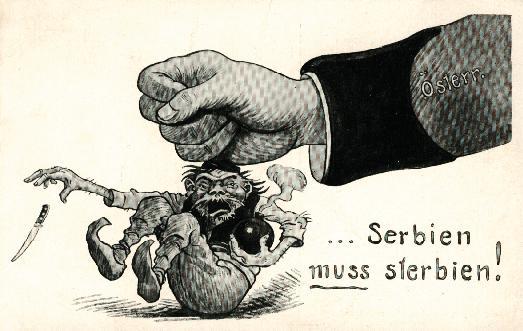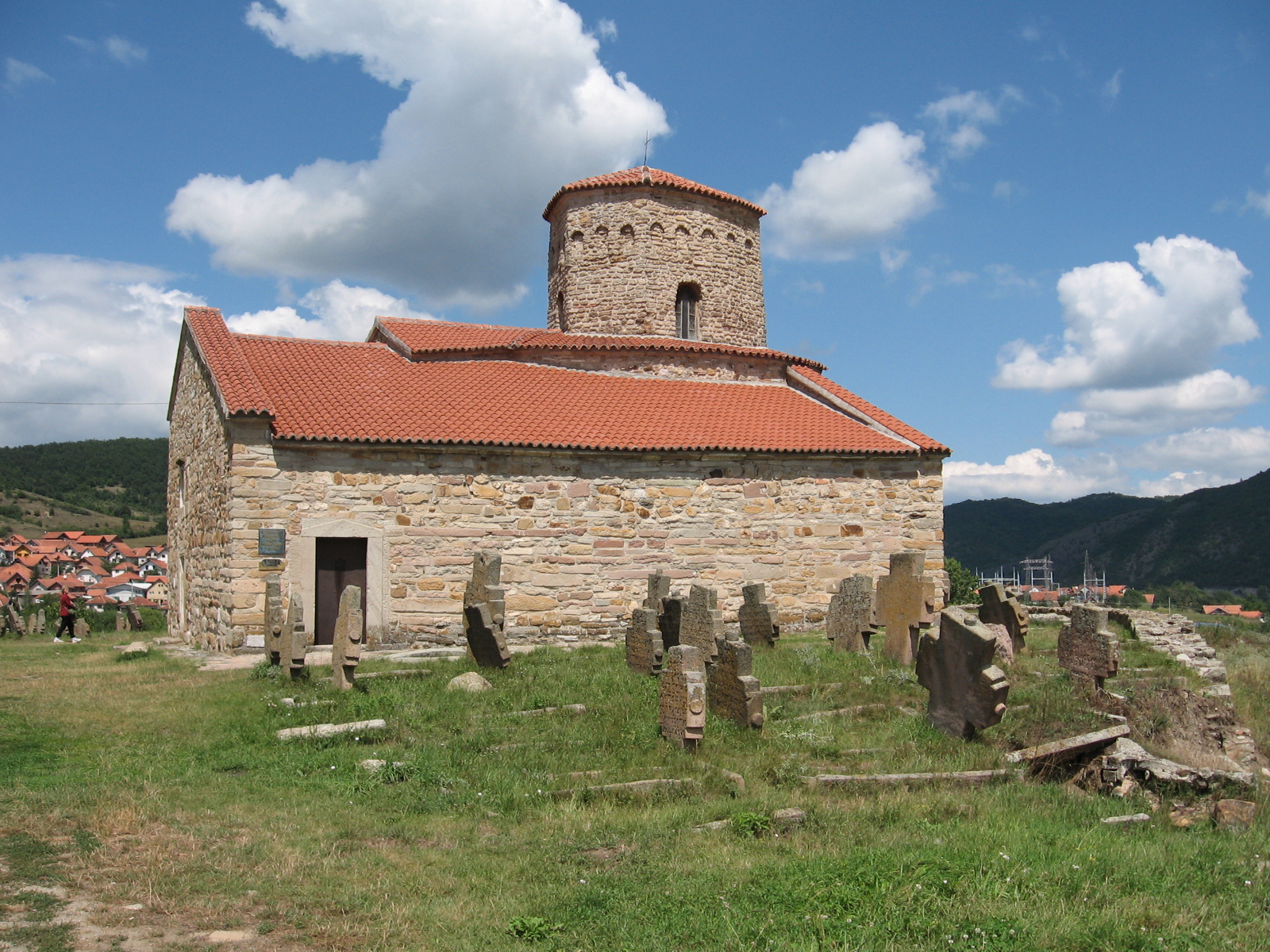|
Anti-Serb Sentiment
Anti-Serb sentiment or Serbophobia ( sr-Cyrl-Latn, србофобија, srbofobija, separator=" / ") is a generally negative view of Serbs as an ethnic group. Historically it has been a basis for the persecution of ethnic Serbs. A distinctive form of anti-Serb sentiment is anti-Serbian sentiment, which can be defined as a generally negative view of Serbia as a nation-state for Serbs. Another form of anti-Serb sentiment is a generally negative view of Republika Srpska, the Serb-majority entity in Bosnia and Herzegovina. The best known historical proponent of anti-Serb sentiment was the 19th- and 20th-century Croatian Party of Rights. The most extreme elements of this party became the Ustaše in the Kingdom of Yugoslavia, a Croatian fascist organization that came to power during World War II and instituted racial laws that specifically targeted Serbs, Jews, Roma and dissidents. This culminated in the genocide of Serbs and members of other minority groups that lived in the In ... [...More Info...] [...Related Items...] OR: [Wikipedia] [Google] [Baidu] |
Ethnic Cleansing
Ethnic cleansing is the systematic forced removal of ethnic, racial, or religious groups from a given area, with the intent of making the society ethnically homogeneous. Along with direct removal such as deportation or population transfer, it also includes indirect methods aimed at forced migration by coercing the victim group to flee and preventing its return, such as murder, rape, and property destruction. Both the definition and charge of ethnic cleansing is often disputed, with some researchers including and others excluding cultural genocide, coercive assimilation or mass killings as a means of depopulating an area of a particular group, or calling it a euphemism for genocide or cultural genocide. In 21st century Europe, the term ''remigration'' has been used for similar policies. Although scholars do not agree on which events constitute ethnic cleansing, list of ethnic cleansing campaigns, many instances have occurred throughout history. The term was first used to descri ... [...More Info...] [...Related Items...] OR: [Wikipedia] [Google] [Baidu] |
Sjenica
Sjenica ( sr-cyr, Сјеница, ) is a town and municipality located in the Zlatibor District of southwestern Serbia, on the vast Sjenica- Pešter plateau and geographically located in the central part of Sandžak. The population of the municipality, according to 2022 census, is 24,083, while the town has a population of 12,989. In terms of area (1,059 km2), Sjenica is 11th largest municipality in Serbia. A multi-ethnic environment where Bosniaks, Serbs, Albanians, Montenegrins, Turks, Romani and others live in it. According to the level of development of local self-government units for the year 2014, the municipality of Sjenica belongs to the fourth group consisting of 44 extremely underdeveloped local self-government units whose level of development is below 60% of the national average. History The Sjenica area was inhabited since prehistoric times. The remains of a prehistoric fortification were found on the edge of the Sjenica field, on the Zarudina hill, near Sjenica, ... [...More Info...] [...Related Items...] OR: [Wikipedia] [Google] [Baidu] |
Novi Pazar
Novi Pazar ( sr-cyr, Нови Пазар) is a List of cities in Serbia, city located in the Raška District of southwestern Serbia. As of the 2022 census, the urban area has 71,462 inhabitants, while the city administrative area has 106,720 inhabitants. The city is the cultural center of the Bosniaks in Serbia and of Sandžak. A multicultural area of Muslims and Eastern Orthodox, Orthodox Christians, many monuments of both religions, like the Altun-Alem Mosque and the Church of Saint Apostles Peter and Paul (Novi Pazar), Church of the Holy Apostles Peter and Paul, are located in the region which has a total of 30 protected monuments of culture. Name During the 14th century under the old Serbian fortress of Stari Ras, an important market-place named ''Trgovište'' started to develop. By the middle of the 15th century, in the time of the final Ottoman Empire conquest of Old Serbia, another market-place was developing some 11 km to the east. The older place became known as ''St ... [...More Info...] [...Related Items...] OR: [Wikipedia] [Google] [Baidu] |
1901 Massacres Of Serbs
Acts of violence were committed against ethnic Serbs, primarily by Albanians, during the final stages of the Ottoman Empire and their control of parts of the Balkans (late 19th and early 20th century). Background The Ottomans began expanding into the Balkans during the 14th century, initially as part of the Byzantine–Ottoman wars, followed by the Bulgarian–Ottoman wars, the Serbian–Ottoman wars and the Albanian-Ottoman Wars during the 14th-15th centuries. Most of the Balkans came under Ottoman control by the 16th century and were governed as part of Rumelia, corresponding to most of the modern Balkan region. During the Serbian–Ottoman War of 1876–78, between 49,000 and 130,000 Albanian civilians were violently expelled by the Serb army from the Sanjak of Niš and fled to the Kosovo Vilayet. Within the context of the Serbian–Ottoman Wars, the Sultan Abdul Hamid II unleashed his auxiliary troops consisting of Kosovar Albanians on the remaining Serbs before a ... [...More Info...] [...Related Items...] OR: [Wikipedia] [Google] [Baidu] |
Bujanovac
Bujanovac ( sr-cyr, Бујановац, ; ) is a List of cities in Serbia, town and Municipalities and cities of Serbia, municipality located in the Pčinja District of southern Serbia. As of the 2022 census, the municipality has a population of 41,068. Situated in the South Morava basin, it is located in the geographical area known as Preševo Valley. It is also known for its source of mineral water and spa town ''Bujanovačka banja''. Ethnically, Serbs are the largest ethnic group in the town, while the largest ethnic group in the municipality are Albanians in Serbia, Albanians. History Ancient history Kale-Krševica, located south of Ristovac, is an archaeological site of a 5th-century BC Ancient city of Macedon, thought to be Damastion. The Thracians, Thracian Triballi and Paeonian Agrianes dwelled in the region, with the Scordisci settling here after the Gallic invasion of the Balkans in 279 BC. The region was conquered by the Ancient Rome, Romans after 75 BC. It became part ... [...More Info...] [...Related Items...] OR: [Wikipedia] [Google] [Baidu] |
Pristina
Pristina or Prishtina ( , ), . is the capital and largest city of Kosovo. It is the administrative center of the eponymous municipality and District of Pristina, district. In antiquity, the area of Pristina was part of the Dardanian Kingdom. The heritage of the classical era is represented by the settlement of Ulpiana. After the Roman Empire was divided into a western and an eastern half, the area remained within the Byzantine Empire between the 5th and 9th centuries. In the middle of the 9th century, it was ceded to the First Bulgarian Empire, before falling again under Byzantine occupation in the early 11th century and then in the late 11th century to the Second Bulgarian Empire. The growing Kingdom of Serbia (medieval), Kingdom of Serbia annexed the area in the 13th century and it remained under the Serbian Empire in the 14th century up to the start of the Ottoman era (1389–1455). The next centuries would be characterized by Ottoman Empire, Ottoman rule. During this per ... [...More Info...] [...Related Items...] OR: [Wikipedia] [Google] [Baidu] |
Attacks On Serbs During The Serbian–Ottoman War (1876–78)
Acts of violence were committed against ethnic Serbs, primarily by Albanians, during the final stages of the Ottoman Empire and their control of parts of the Balkans (late 19th and early 20th century). Background The Ottomans began expanding into the Balkans during the 14th century, initially as part of the Byzantine–Ottoman wars, followed by the Bulgarian–Ottoman wars, the Serbian–Ottoman wars and the Albanian-Ottoman Wars during the 14th-15th centuries. Most of the Balkans came under Ottoman control by the 16th century and were governed as part of Rumelia, corresponding to most of the modern Balkan region. During the Serbian–Ottoman War of 1876–78, between 49,000 and 130,000 Albanian civilians were violently expelled by the Serb army from the Sanjak of Niš and fled to the Kosovo Vilayet. Within the context of the Serbian–Ottoman Wars, the Sultan Abdul Hamid II unleashed his auxiliary troops consisting of Kosovar Albanians on the remaining Serbs before and ... [...More Info...] [...Related Items...] OR: [Wikipedia] [Google] [Baidu] |
Pčinja District
The Pčinja District (, ) is one of administrative districts of Serbia. It occupies the southernmost part of Serbia, bordering Bulgaria, North Macedonia, and Kosovo Kosovo, officially the Republic of Kosovo, is a landlocked country in Southeast Europe with International recognition of Kosovo, partial diplomatic recognition. It is bordered by Albania to the southwest, Montenegro to the west, Serbia to the .... According to the 2022 census, it has a population of 193,802 inhabitants. The administrative center of the district is the city of Vranje. History The present-day administrative districts (including Pčinja District) were established in 1992 by the decree of the Government of Serbia. Municipalities The district encompasses one city and 7 municipalities: * Vranje (city) * Bosilegrad (municipality) * Bujanovac (municipality) * Preševo (municipality) * Surdulica (municipality) * Trgovište (municipality) * Vladičin Han (municipality) * Vranjska Banja (munici ... [...More Info...] [...Related Items...] OR: [Wikipedia] [Google] [Baidu] |
Expulsion Of The Albanians 1877–1878
{{disambiguatio ...
Expulsion or expelled may refer to: General * Deportation * Ejection (sports) * Eviction * Exile * Expeller pressing * Expulsion (education) * Expulsion from the United States Congress * Extradition * Forced migration * Ostracism * Persona non grata Media * Expelled (film), 2014 teen comedy film * Expelled: No Intelligence Allowed, 2008 film * Expulsion (band), Swedish doom/death metal band * The Expelled, English punk/rock band * The Expulsion (film), a 1923 silent German film * "Expelled" (short story), a 1930 short story by John Cheever * Expelled!, a 2025 video game See also * * * Ejaculation (other) * Ejection (other) * Evicted (other) * Explosion (other) An explosion is a sudden increase in volume and release of energy in an extreme manner. Explosion, Explosive, Explode or Exploder may also refer to: * Explosive material, a substance that can produce an explosion Film * Explosion (1923 film) ... [...More Info...] [...Related Items...] OR: [Wikipedia] [Google] [Baidu] |
Turco-Albanians
Turco-Albanian (, ''Tourk-alvanoi'') is an ethnographic, religious, and derogatory term used by Greeks for Muslim Albanians since 1715.Millas, Iraklis (2006). "Tourkokratia: History and the image of Turks in Greek literature." ''South European Society & Politics''. 11. (1): 50. “The ‘timeless’ existence of the Other (and the interrelation of the Self with this Other) is secured by the name used to define him or her. Greeks often name as ‘Turks’ various states and groups—such as the Seljuks, the Ottomans, even the Albanians (''Turkalvanoi'')”. In a broader sense, the term included both Muslim Albanian and Turkish political and military elites of the Ottoman administration in the Balkans. The term is derived from an identification of Muslims with Ottomans and/or Turks because of the Ottoman Empire's administrative millet system of classifying peoples according to religion in which the Muslim millet played the leading role.Nitsiakos, Vassilis (2010). On the border: Trans ... [...More Info...] [...Related Items...] OR: [Wikipedia] [Google] [Baidu] |



